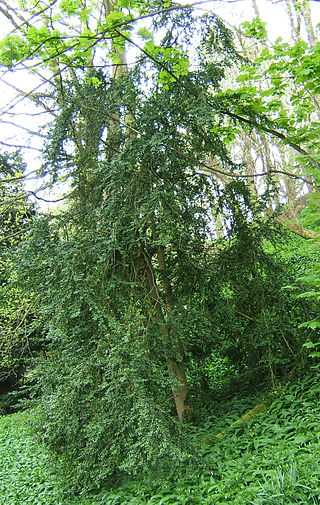
Madagascar, officially the Republic of Madagascar, is an island country comprising the island of Madagascar and numerous smaller peripheral islands. Lying off the southeastern coast of Africa, it is the world's fourth largest island, the second-largest island country and the 46th largest country in the world. Its capital and largest city is Antananarivo.

The history of Madagascar is distinguished clearly by the early isolation of the landmass from the ancient supercontinent of Pangaea, containing amongst others the African continent and the Indian subcontinent, and by the island's late colonization by human settlers from the Sunda islands and from East Africa. These two factors facilitated the evolution and survival of thousands of endemic plant and animal species, some of which have gone extinct or are currently threatened with extinction. Trade in the Indian Ocean at the time of first colonization of Madagascar was dominated by Indonesian ships, probably of Borobudur ship and K'un-lun po types.

Antananarivo, also known by its colonial shorthand form Tana, is the capital and largest city of Madagascar. The administrative area of the city, known as Antananarivo-Renivohitra, is the capital of Analamanga region. The city sits at 1,280 m (4,199 ft) above sea level in the center of the island, the highest national capital by elevation among the island countries. It has been the country's largest population center since at least the 18th century. The presidency, National Assembly, Senate, and Supreme Court are located there, as are 21 diplomatic missions and the headquarters of many national and international businesses and NGOs. It has more universities, nightclubs, art venues, and medical services than any city on the island. Several national and local sports teams, including the championship-winning national rugby team, the Makis, are based here.

Buxus is a genus of about seventy species in the family Buxaceae. Common names include box or boxwood.
The Madagascar national football team, nicknamed Barea after the island's zebu, is the national team of Madagascar and is controlled by the Malagasy Football Federation. It has never qualified for the finals of the World Cup. It took part in its first Africa Cup of Nations in 2019. Among its biggest wins was a 1–0 home victory over Egypt in the qualification rounds of the 2004 Africa Cup of Nations until being surpassed by a recent 2–0 win over Nigeria in the group stage of the 2019 Africa Cup of Nations. Reflecting the official name of the country at the time, the team was known as the Malagasy Republic national football team between 1958 and 1975.

The Battle of Madagascar was an Allied campaign to capture the Vichy French-controlled island Madagascar during World War II. The seizure of the island by the British was to deny Madagascar's ports to the Imperial Japanese Navy and to prevent the loss or impairment of the Allied shipping routes to India, Australia and Southeast Asia. It began with Operation Ironclad, the seizure of the port of Diego-Suarez near the northern tip of the island, on 5 May 1942.

Madagascar: Escape 2 Africa is a 2008 American animated adventure comedy film produced by DreamWorks Animation SKG and PDI/DreamWorks and distributed by Paramount Pictures. It is the sequel to Madagascar (2005) and the second installment in the franchise. It was directed by Eric Darnell and Tom McGrath and written by Etan Cohen, Darnell, and McGrath. The film features Ben Stiller, Chris Rock, David Schwimmer, Jada Pinkett Smith, Sacha Baron Cohen, Cedric the Entertainer, Andy Richter, Elisa Gabrielli, McGrath, Chris Miller, Christopher Knights, and Conrad Vernon reprising their voice acting roles from the first film, joined by new cast members Bernie Mac, Alec Baldwin, Sherri Shepherd, and will.i.am, as well as voice acting veteran John DiMaggio. In the film, the main characters, a party of animals from the Central Park Zoo whose adventures have taken them to Madagascar find themselves in the African savannas, where they meet others of their species and where Alex the lion reunites with his parents.

Madagascar is divided into 22 regions (faritra). These formerly second-tier administrative divisions became first-level administrative divisions when the former six provinces were dissolved on 4 October 2009.

Districts are second-level administrative divisions of Madagascar below the regions. There are 114 districts in Madagascar. Districts are in their turn divided into communes; while some of the districts in urban areas and offshore islands each consist of only one commune, most of the districts are divided typically into 5–20 communes.

Madagascar is a 2005 American animated survival comedy film produced by DreamWorks Animation SKG and PDI/DreamWorks, and distributed by DreamWorks Pictures. The film was directed by Eric Darnell and Tom McGrath and written by Darnell, McGrath, Mark Burton, and Billy Frolick. The film stars the voices of Ben Stiller, Chris Rock, David Schwimmer, Jada Pinkett Smith, Sacha Baron Cohen, Cedric the Entertainer, and Andy Richter. It centers around a group of animals from the Central Park Zoo who find themselves stranded on the island of Madagascar and must adjust to living in the wild.

The Penguins of Madagascar is an American animated television series produced by DreamWorks Animation and co-produced by Nickelodeon Animation Studio. It stars nine characters from DreamWorks' animated film Madagascar: the penguins Skipper, Rico, Kowalski, and Private ; the lemurs King Julien, Maurice, and Mort ; and Mason and Phil the chimpanzees. Characters new to the series include Marlene the otter and a zookeeper named Alice. It is the first Nicktoon co-produced with DreamWorks Animation. The series was executive-produced by Bob Schooley and Mark McCorkle, who were the creators of the animated series Buzz Lightyear of Star Command and Disney Channel's Kim Possible.

Madagascar is an American media franchise owned and produced by DreamWorks Animation. The voices of Ben Stiller, Chris Rock, David Schwimmer and Jada Pinkett Smith are featured in the films. It began with the 2005 film Madagascar, the 2008 sequel Madagascar: Escape 2 Africa and the third film Madagascar 3: Europe's Most Wanted in 2012. A spin-off film featuring the penguins, titled Penguins of Madagascar, was released in 2014. A fourth main film, Madagascar 4, was announced for 2018, but has since been removed from its schedule due to the studio's restructuring.

Madagascar 3: Europe's Most Wanted is a 2012 American animated comedy film produced by DreamWorks Animation and PDI/DreamWorks and distributed by Paramount Pictures. The third installment in the Madagascar franchise, it is the sequel to Madagascar: Escape 2 Africa (2008), and was the first film in the series to be released in 3D. It was directed by Eric Darnell, Conrad Vernon and Tom McGrath from a screenplay by Darnell and Noah Baumbach. The film stars Ben Stiller, Chris Rock, David Schwimmer, Jada Pinkett Smith, Sacha Baron Cohen, Cedric the Entertainer, Andy Richter, McGrath, Chris Miller, Christopher Knights, John DiMaggio, and Vernon reprising their voice acting roles from the previous installments, alongside new cast members Jessica Chastain, Bryan Cranston, Martin Short and Frances McDormand. In the film, the main characters—a party of animals from the Central Park Zoo whose adventures have already taken them to Madagascar and Africa—attempt to return to New York City, and find themselves traveling across Europe with a circus while avoid being chased by a villainous French Animal Control officer.

Andry Nirina Rajoelina is a Malagasy-French politician and businessman who has served as president of Madagascar since 2023. He previously served as president from 2019 to 2023, and was president of a provisional government from 2009 to 2014 following a political crisis and military-backed coup, having held the office of Mayor of Antananarivo for one year prior. Before entering the political arena, Rajoelina was involved in the private sector, including a printing and advertising company called Injet in 1999 and the Viva radio and television networks in 2007.

Malagasy is an Austronesian language and dialect continuum spoken in Madagascar. The standard variety, called Official Malagasy, is an official language of Madagascar alongside French.

This is a list of prime ministers of Madagascar, since the establishment of the office of chief minister in 1828, during the Merina Kingdom.

Penguins of Madagascar is a 2014 American animated spy action comedy film produced by DreamWorks Animation and PDI/DreamWorks and distributed by 20th Century Fox. A spin-off of the Madagascar franchise, and the fourth film overall in the series, the film was directed by series director Eric Darnell and Simon J. Smith from a screenplay written by Brandon Sawyer and the writing team of Michael Colton and John Aboud, based on a story conceived by Colton, Aboud, Alan Schoolcraft, and Brent Simons. Despite the title of the film, it is not directly related to the Nickelodeon animated television series The Penguins of Madagascar. Starring the voices of Tom McGrath, Chris Miller, Christopher Knights, Conrad Vernon, Benedict Cumberbatch, Ken Jeong, Annet Mahendru, Peter Stormare and John Malkovich, it takes place directly after the events of Madagascar 3: Europe's Most Wanted (2012), following the adventures of four Adélie penguins - Skipper, Kowalski, Rico and Private - as they join forces with the North Wind intelligence agency to stop the Giant Pacific octopus Dave, who seeks revenge on all Adélie penguins across the Earth for being upstaged by capturing them.

The Colony of Madagascar and Dependencies was a French colony off the coast of Southeast Africa between 1897 and 1958 in what is now Madagascar. The colony was formerly a protectorate of France known as Malagasy Protectorate. The protectorate became a colony, following Queen Ranavalona III's exile to Réunion.
Miss Madagascar is a national Beauty pageant in Madagascar.













